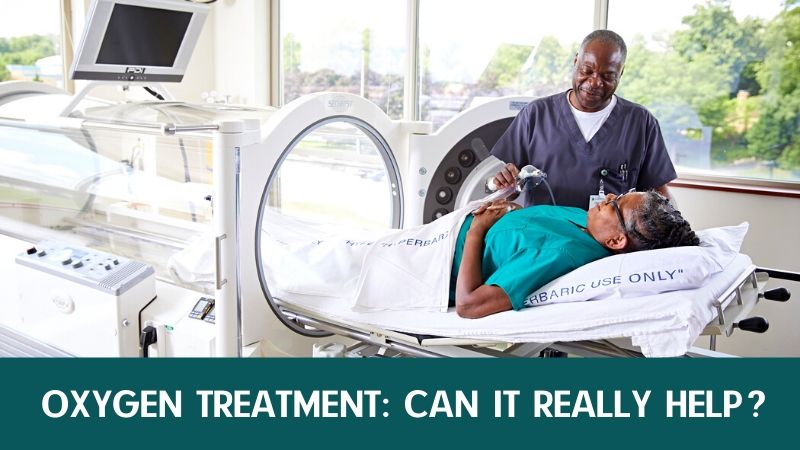 It’s time to talk about an interesting method of alternative treatment which is called oxygen therapy. There are different types of such treatment: hyperbaric oxygenation, oxidation, ozone therapy.
It’s time to talk about an interesting method of alternative treatment which is called oxygen therapy. There are different types of such treatment: hyperbaric oxygenation, oxidation, ozone therapy.
For several decades, medical practitioners have discussed the importance of treatment using hyperbaric oxygen (i.e., pressure chambers). This topic became very popular in the 1980s when they published a press photograph of the world-famous singer Michael Jackson the press chamber.
How oxygen therapy can help patients?
Recent studies prove that oxygen therapy can help people suffering from various diseases. Such treatment has shown positive results in liver transplantation; helps prevent amputation of various parts of the body in case of severe frostbite; cures eye diseases; used as a means of alleviating the condition of the patient after a stroke.
Health specialists from AAOAF Canadian Pharmacy note that their customers effectively use oxygen therapy in combination with antibiotics and surgical treatment. This has a positive effect on treatment outcomes, thus reducing mortality.
Hyperbaric oxygen therapy is a process of short-term inhalation of pure (100%) oxygen at a pressure of up to 2 atmospheres. The air we breathe contains 21% oxygen. Treatment can be received by several people at once, or one at a time. There are oxygen chambers that are designed for several places. These are air pressure chambers that are large steel cylinders. They help patients receive oxygen through a mask, or in an acid tent, or through an intratracheal tube. There are cameras for one person. This is an oxygen pressure chamber.
Treatment usually lasts 60-90 minutes. Some pressure chambers have a transparent wall, and this allows patients to see everything that happens outside, and also to talk with maintenance staff. If necessary, the patient can inform the doctor about the completion of the procedure.
In the human body, oxygen is carried to all organs by red blood cells. In the process of oxygen therapy, it dissolves in all the liquid substations of the body – white blood cells, cerebrospinal and cerebrospinal fluid, etc. Oxygen, entering in large quantities into the body, reaches the farthest sections of damaged tissues and helps restore their structure. Other gaseous elements are excreted as soon as the body is overfilled with oxygen. In this way, the degree of damage caused by toxic gases (e.g. carbon monoxide) is reduced.
This method of treatment can be used for diabetes with impaired peripheral blood circulation, chronic ulcerative skin lesions, various types of injuries, the toxic effects of carbon monoxide and decompression sickness.
American specialists teaching doctors the method of oxygen therapy list more than 160 cases of using oxygen as a means of curing vegetative coma, burns, frostbite, migraines, as well as to help in case of hanging or electrical injuries.
In addition, oxygen therapy is increasingly used to cure some of the symptoms associated with HIV infection and AIDS. It is believed that two or three one-hour sessions in a pressure chamber reduce chronic fatigue, exhaustion, anorexia, which accompany this disease and disrupt the process of certain biochemical reactions. Anemia (a sign of AIDS) can also be treated with oxygen therapy.
In cases of carbon monoxide poisoning, oxygen therapy is one of the best ways to provide medical care. In general, in the United States, more than half of the poisoning that led to death can be attributed to carbon monoxide. Once in the human body, namely in the blood, it interacts with hemoglobin faster than oxygen. Therefore, in case of poisoning, most of the hemoglobin does not participate in the transportation (transfer) of oxygen to tissue. Although the exact mechanism is not fully understood, in the process of treatment, oxygen expels carbon monoxide and it combines with hemoglobin molecules.
This method is quite effective for tissue necrosis. This term refers to the necrosis of cells in any part of the body. Necrosis can occur as a result of infections, blood loss due to serious injury or frostbite. If injured or cut, an infection caused by bacteria can occur. It is known as gas gangrene and can threaten a person’s life. In serious cases, surgical intervention is required – tissue removal (sometimes even amputation).
A bit of history
Ozone as a treatment was tested for the first time by a research scientist from Germany in 1870. He used ozone to cleanse the blood. During World War I, ozone was successfully used by the military to treat infectious diseases. Today, more than 7 thousand doctors who apply traditional and non-traditional methods of treatment successfully use ozone in many cases.
In 1898, hydrogen peroxide aerosol was successfully used for the first time in the treatment of diphtheria. Its intravenous use has reduced mortality during the flu epidemic in 1919.
Hydrogen peroxide can be administered intravenously or orally, i.e., by mouth, in a very dilute concentration. Experiments with this drug so familiar to us are continuing.
Category: Medicine
Tags: oxygen, oxygen deficiency, oxygen therapy
